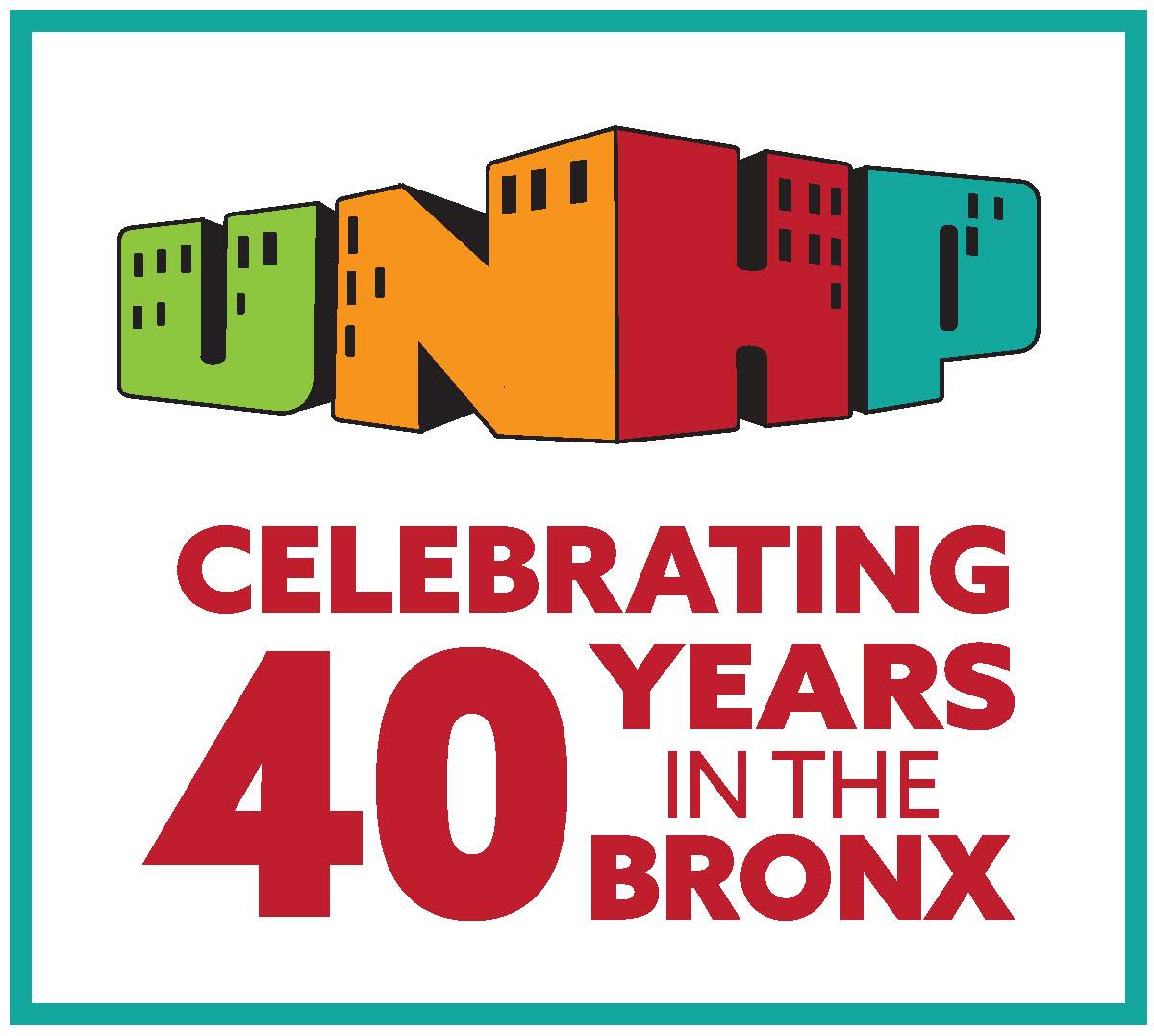40 Years of Highlights - UNHP Timeline
Forty years is an accomplishment for any community organization and one that University Neighborhood Housing Program (UNHP) does not take lightly. As our timeline shows, the seeds for UNHP’s work were planted almost 10 years before our official creation year in 1983. What started as frustration with the deterioration, and lack of public and private investment in the 70s, transformed into a determination to do something about it by those that had the most to lose - Bronx residents. That determination, dedication, and inspiration made the story of the Bronx a very different one than so many anticipated back in the 1970s. Organized with the support of local parishes, Bronx leaders, tenants, and clergy worked together to convert that frustration into action and that action re-shaped the future. And the work continues to be performed by thousands of people living and working in the Bronx. This timeline highlights parts of UNHP’s story. UNHP is proud of our past and privileged to play a role in the ongoing work of preserving housing affordability and improving the living conditions of the Bronx for the people living here today.
1974: With disinvestment and redlining taking a heavy toll in the Bronx, including fires and abandonment rapidly spreading northward, the Northwest Bronx Community and Clergy Coalition is founded. Bishop Patrick Ahern, Vicar for the Northwest Bronx vicariate delivers a homily and a call to action to organize to save the community.
1975: Local and national organizing work leads to the passage of the Home Mortgage Disclosure Act (HMDA) creating a source for empirical data to show the extent of redlining.
1977: Further organizing work using HMDA data leads to the passage of the Community Reinvestment Act (CRA), requiring banks to make loans in neighborhoods they take deposits from.
1980: NWBCCC creates the Reinvestment Project, leveraging the CRA to expand financing opportunities for neighborhood buildings.
1983: University Neighborhood Housing Program (UNHP) is created by Fordham University to assist in community-based redevelopment efforts.
1985: UNHP assists in a moderate rehabilitation Section 8 multifamily housing deal.
1986: UNHP provided the Fordham Bedford Housing Corporation with a loan towards the purchase of Concourse House, a transitional shelter for women and children that would also become the main office for its sponsors FBHC, Concourse House HDFC, and the offices of UNHP as well.
1988: NWBCCC becomes the second sponsor organization of UNHP. UNHP obtains four lines of credit and one investment to begin acquisition lending to tenants organizations, and fledgling housing corporations in the northwest Bronx.
1989: UNHP hires our first staff member, Executive Director Jim Buckley. We decide to keep him around for the long haul.
1990: UNHP becomes the first nonprofit to broker a Freddie Mac multifamily building acquisition and our work to purchase seven Freddie Mac foreclosures begins.
1991: UNHP obtains our first investment from a religious entity, the Sisters of Charity of Saint Vincent de Paul.
1992: UNHP receives the first-ever Affordable Housing Program award from the Federal Home Loan Bank for our work on Oliver Gardens HDFC, a tenant-owned limited equity cooperative. The building is pictured below with its tenants' leaders, including HDFC president and UNHP Board member, Virginia Matic and on the far right Eartha Ferguson the Fordham Bedford Housing Corporation building manager.
1993: UNHP begins our work on lead poisoning prevention including training supers and managers in lead-safe practices. We close on 793-797 Garden Street HDFC, an 87-unit building that had once been abandoned by its owner who took the boiler with him, leaving tenants in the cold.
1994: UNHP creates and capitalizes our Green Loan Fund with no and low-interest loans with an average 5-year term repaid out of the savings generated by the improvement. We have used Green Loans to fund roof replacements, boiler repair, and other work that reduces operating costs and saves energy. As of our 40th anniversary year, UNHP has issued 82 Green Loans to affordable housing initiatives in the local community.
1995: UNHP reached the $1 million lending milestone. UNHP begins our outreach work to Bronx 1-4 family homeowners with a mortgage fair. Over the years we have hosted over 70 resource and homeownership fairs that provide on-the-spot access to public, nonprofit, and private resources to neighborhood residents, like this 2015 Immigration and Financial Resource Fair, or this 2019 Fair in the Norwood community or this 2016 Month-long Resource Fair for senior citizens.
1996: Representing the Northwest Bronx, UNHP is selected for a six-city pilot project with Fannie Mae and National People’s Action (NPA) to work on mortgage products. We begin to research the potential impacts of welfare reform legislation in the Bronx, leading to neighborhood meetings around daycare issues.
1997: Five years of predevelopment pay off with the closing of the Tremont Anthony Community Ownership Project. The complicated deal would win several awards and provide affordable homes for 32 families.
1998: UNHP organizes a group of home-based daycare providers into a network called Providers United/Proveedores Unidas. The network has expanded and continues to thrive and grow under the stewardship of Fordham Bedford Community Services.
 1999: Our director Jim Buckley is honored with one of Fannie Mae Foundation’s inaugural James A. Johnson Community Fellowship Awards.
1999: Our director Jim Buckley is honored with one of Fannie Mae Foundation’s inaugural James A. Johnson Community Fellowship Awards.
2000: With future talk show host Chris Hayes as our summer intern, UNHP creates the award-winning Community Resource Guide on our website. Based on anecdotal evidence of rising sales prices, we begin our empirical research work on multifamily real estate trends and host a forum: “Six Times Rent Roll.”
2001: The Multifamily Conservation Program is created by DEP rewarding 10 years of water and sewer rate organizing work by UNHP.
2002: UNHP provides two citywide workshops on the use of our Community Resource Guide focusing on CRA data and property owner information.
2003: UNHP launched the Fordham Community Action Plan (FCAP) with FBHC concentrating many of our efforts cooperatively in a geographically targeted area. We mark our 20th Anniversary with the release of the prescient report, “A Real Estate Bubble in the Bronx.” Using lender name searches on ACRIS, we begin to create a database that will eventually become our Building Indicator Project.
2004: Following our 20th Anniversary Forum, UNHP creates the Multifamily Assistance Center. Eleven financial institutions attend our first roundtable meeting.
2005: Our loan money assists FBHC to purchase a 13-unit Single Room Occupancy building and gut renovate a 9-unit vacant building at 2241 Webster Avenue with Green features. UNHP funds the installation of heat computers in 13 multifamily buildings with $60,000 from our Green Loan Fund. Our report, Rising Values in a Highly Subsidized Market, and the corresponding forum look at rising sales prices and the threats to funding of Section 8 vouchers.
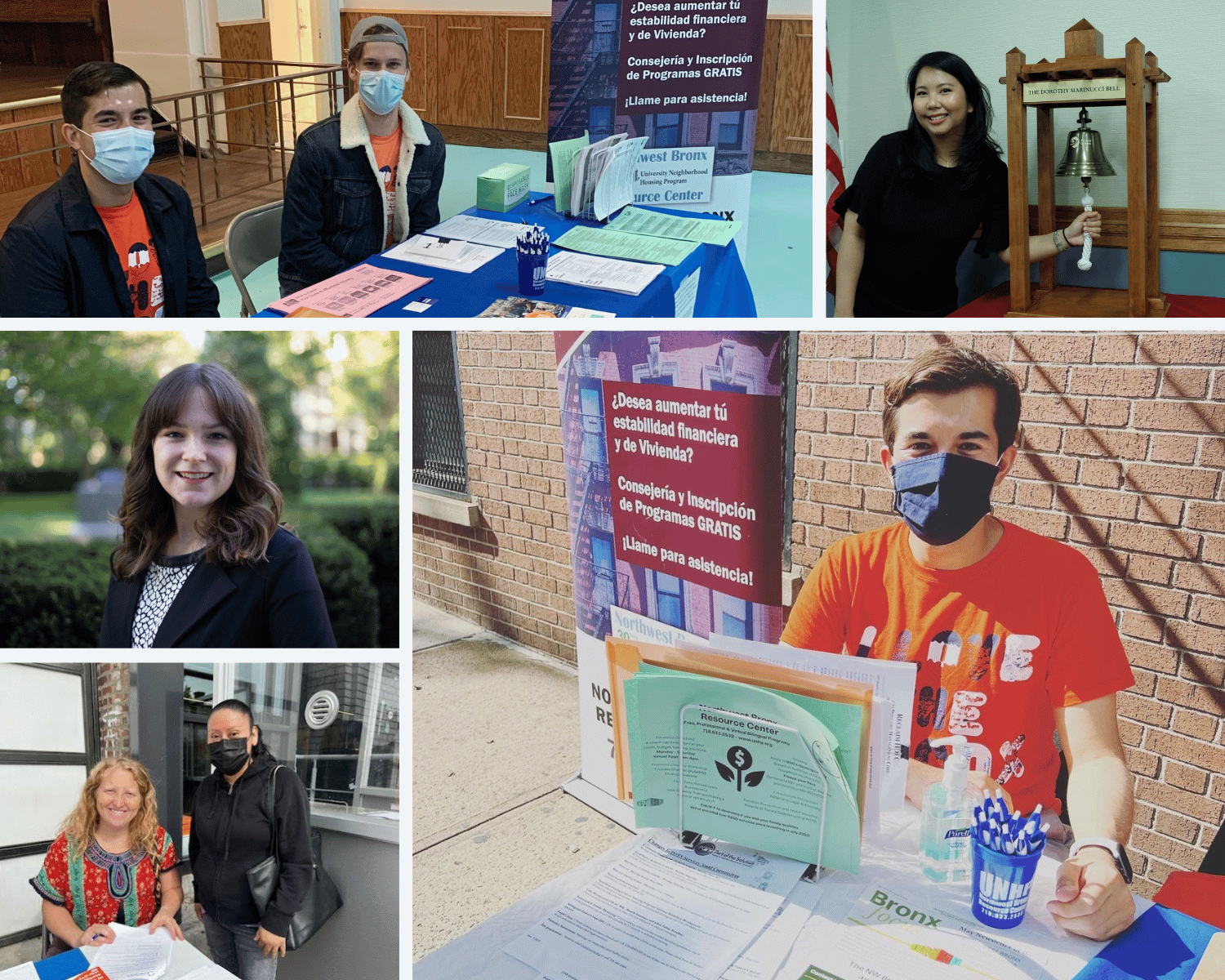
2006: Sensing an impending collapse in the 1-4 real estate market due to skyrocketing levels of sub-prime lending, UNHP releases our State of Homeownership in the Bronx report. With a fleet of interns, we manually look up more than a dozen data points for each of the 7,175 Bronx multifamily buildings in our first BIP Database release. We begin our partnership with the Fordham University IPED program, hosting their first Returning Peace Corps Fellow as our intern. Since then, we have benefitted from the expertise of 20 fellows.
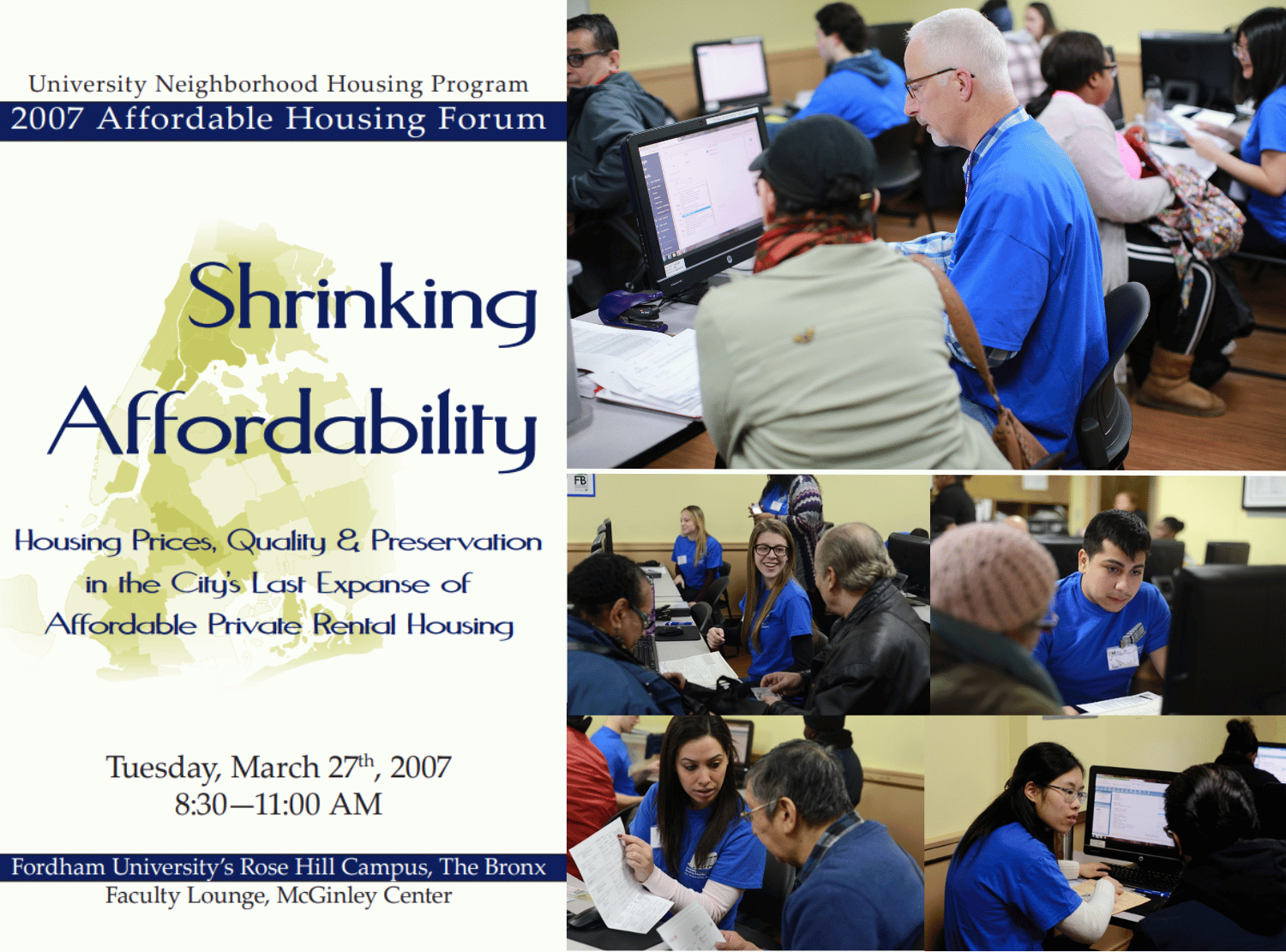
2007: UNHP provides $400,000 in equity financing and loan packaging assistance to FBHC towards the purchase of 6 multifamily properties with 286 units, the first project to utilize NYC’s Acquisition Loan Fund. We launch our financial education initiative and host two foreclosure prevention workshops for northwest Bronx homeowners. At our 2007 forum, we release the report, Shrinking Affordability: Housing Prices, Quality & Preservation in the City’s Last Expanse of Affordable Private Rental Housing. We take a lead role citywide on research in Private Equity investors.
2008: In our first year filing taxes at Refuge House, UNHP assisted more than 150 low and moderate-income families. After 15 seasons of offering this service (2008-2022), we have helped Bronxites file 14,000 tax returns and secure $16 million in fee-free refunds. In 2008, we also host a Water and Sewer Rate Reform Summit, asking the question: Can New York City achieve affordable water rates, promote conservation, and control capital costs? The BIP Database goes citywide! (Except Staten Island which we add in 2013).
2009: At our 2009 forum, UNHP releases the report, Envisioning the Future of the Red Zone, referencing the confluence of negative indicators in the west Bronx. We host an Earth Day Water and Energy Conservation Briefing for Bronx multifamily owners and managers.
2010: UNHP joins forces with Rose Hill Management Corporation to refinance and renovate Rose Hill Apartments for 119 low-income senior citizens. Using our BIP data, we release a report documenting a sharp rise in the number of distressed multifamily buildings in NYC. We begin offering BIP subscriptions to community groups.
2011: Expanding on our past English and Spanish language outreach, UNHP hosts a resource fair with Bangla translation for a growing local Bangladeshi population. The City launches the Proactive Preservation Initiative based on UNHP’s BIP Database and tenant organizing work by the NWBCCC. We partner with Fordham Bedford Housing Corporation to acquire, renovate and refinance West Farms Square, an 8-building, 526-unit, Section 8 affordable housing complex.
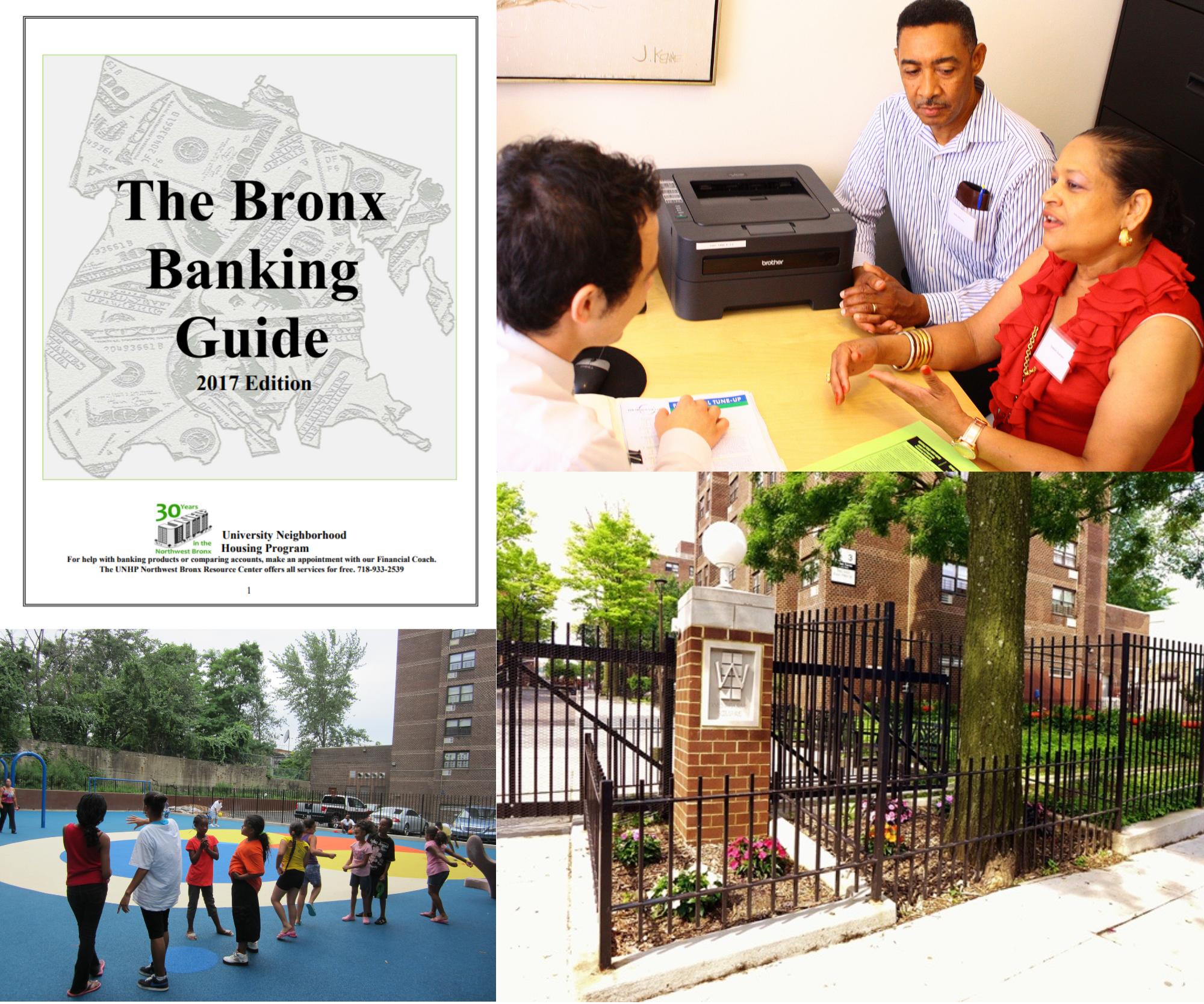
2012: At our forum, Creating a Bronx Economy: Banking Options and Alternative Solutions, UNHP releases our report Banking in the Bronx, which was followed by the Bronx Banking Guide and the Bronx Jobs Guide. We officially launch the Northwest Bronx Resource Center at Refuge House, hosting financial coaching, homeowner counseling, small business development, and free tax preparation services.
2013: The NYS Dept. of Financial Services releases “Slumlord Prevention Guidelines” based in part on our BIP Database. We meet with all four bank regulators about using BIP data in bank examinations. utilizing data sources such as BIP when evaluating a bank for both their Community Reinvestment Act (CRA) exam and Safety and Soundness. DFS integrates BIP as a tool to quantify distress into their CRA examination process.
2014: Tools are created and shared with the community in multiple languages; both the Bronx-focused Banking and Jobs guides are translated into Spanish and French. A series of local events and workshops are sponsored by UNHP to get these printed copies into the hands of Bronx residents. UNHP unveiled a newly redesigned and updated version of the Community Research Guide (CRG) available to researchers, community groups, and anyone else looking for data on their community. This new version included more user-friendly search options, an easier design flow and revised New York City maps.
2015: UNHP creates the Home Ownership Database (HOOD) to identify and reach out to homeowners of 1-4 family homes who have fallen behind on their water and sewer bills or tax payments. The UNHP Northwest Bronx Resource Center launches our outreach and assistance program for low-income senior citizens and people with disabilities. With funding from Citi, community partnerships, the assistance of two NYC Civic Corps, and the Department of Finance, the NWBRC began helping Bronx tenants freeze their rents. UNHP continues to assist with NYC Rent Freeze enrollment today and has helped hundreds of eligible Bronx applicants create affordability in their existing apartments.
2016: Victory! The New York City Water Board creates a credit of $250 per apartment for affordable multifamily housing! UNHP successfully refinanced The Wilton HDFC, a 2-building, 32 Residential Unit and 6 commercial Unit project with HPD/HDC extending the mortgage, tax abatement, and affordability for 35+ years. With this repositioning came substantial rehabilitation of the interior and exterior of the buildings. UNHP worked with 416 individuals through topic-specific financial literacy workshops and resource fairs with opportunities for 1-on-1 help and follow-up at the Resource Center. This included a Small Business Services Childcare Entrepreneurship course (25 Daycare providers graduated from this 40-hour program led by SBA).
2017: UNHP holds an event to celebrate our Views from the Northwest Bronx (#ViewsNWBX) a ten-blog series that covered changes in community development, demographics, multifamily housing sales, and the impact of city housing policy and private investment in the borough. This is also the year that UNHP becomes an NYC Housing Ambassador to help people prepare and apply for affordable housing lotteries. In this capacity, we have worked with 5,769 families to submit lottery applications to 412 of the most affordable buildings on the Housing Connect platform. Of the 9,782+ applications submitted by our clients, 121 have been followed by invitations to interview for an apartment.
2018: UNHP holds two public events marking forty years since the passage of the Community Reinvestment Act Two events: Looking Back and Thinking Forward: CRA at 40 and CRA at a Crossroads, featuring a speech by FDIC board member Martin J. Gruenberg. Water and Sewer Victory! Dozens of Bronx buildings that had applied for the $10 million Multifamily Water Assistance Program started to receive their $250/unit rebate. This rebate for multifamily affordable housing is the culmination of UNHP’s work for over 30 years to highlight the need for water and sewer rate reform and remains in place through 2023. This is also the year that UNHP officially becomes a Financial Empowerment Center, which widely made our financial coaching services available to all NYC residents via 311. Since this launch, our program users have received over 2,934 counseling sessions and attended numerous financial literacy workshops and classes, such as Getting Ahead. 255 participants graduated from this comprehensive, 5 weeks session, and many of the graduates achieved numerous long-term goals of building credit, saving for retirement, or buying a house.
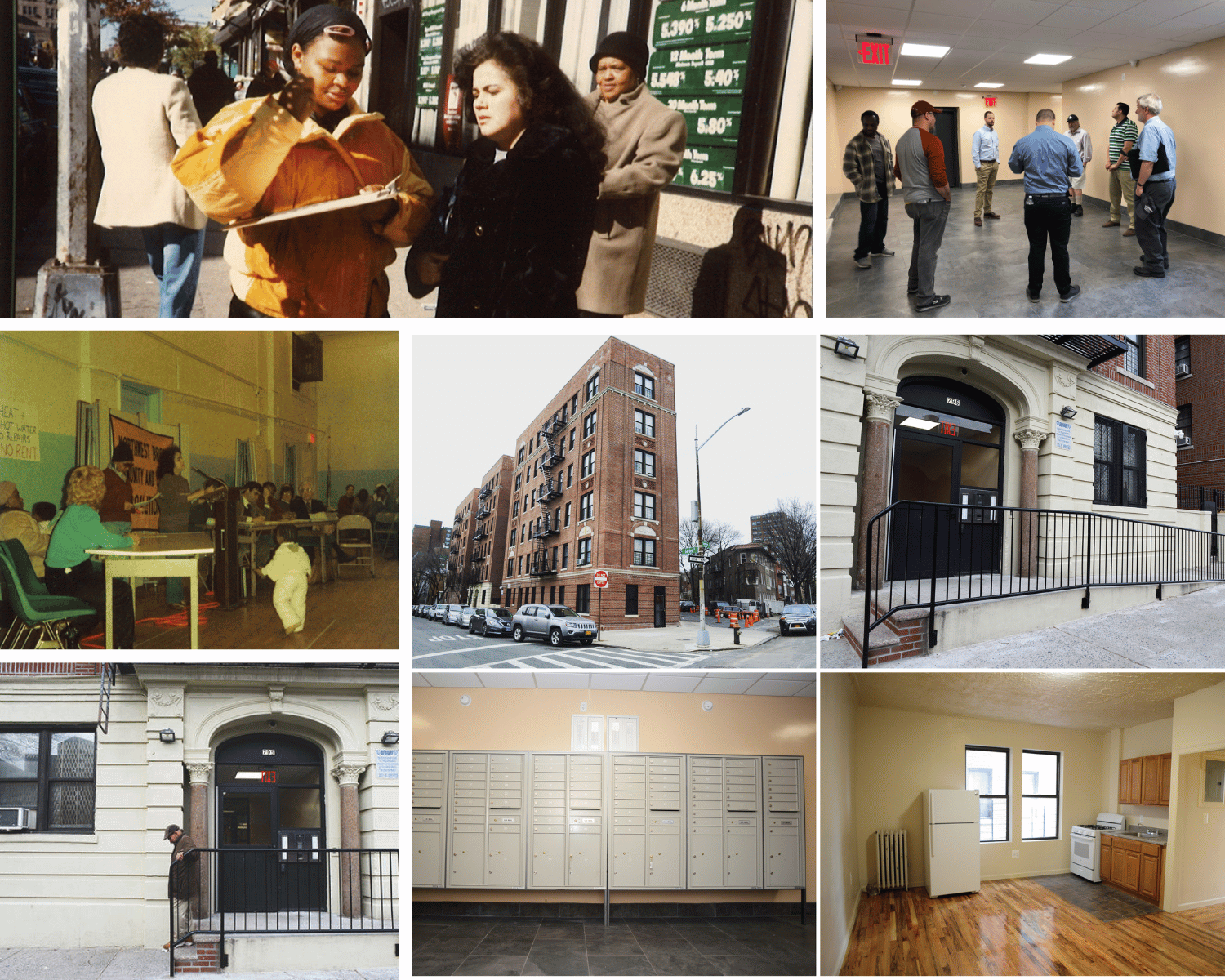
2019: Over 15 years after the Building Indicator Project (BIP) began, UNHP transitions to an updated database system known as the BIP Server, which allows for easier and more powerful analysis of historical data, as well as automation of key processes within the Building Indicator Project. Following a fire that displaced 10 families at 793-97 Garden Street, UNHP oversaw the rehabilitation of fire damage to the affected units and proceeded to fund additional necessary repairs to the project's interior and exterior by refinancing a private mortgage at a lower interest rate and with an additional loan from the UNHP Green Loan fund. The total project cost was over 1.5M.
2020: COVID-19 shuts down the UNHP tax program before the end of the season and UNHP switches to emergency response mode for Bronx residentsusing wifi systems to continue to answer calls for information, food pantries, and pandemic assistance. Read more about our immediate COVID-19 response in this 2020-21 Report. UNHP supports tenant organizing work during the COVID crisis with research and capacity building. In November 2020, we release a report through the Community Service Society, Corporate Windfalls of Social Housing Conversions?, that attempts to contextualize the pandemic in the long history of the NYC housing market. Affordable Housing Win! UNHP successfully completed the refinancing of Reclaim HDFC, a 10-building, 273 Residential Unit/10 Commercial Unit project with HPD/HDC extending the loan term, tax abatement, and affordability for 60 years. With this, refinance came significant interior and exterior rehabilitation of all 10 buildings.
2021: UNHP remains primarily in virtual and remote mode and hosts a series of seven mission-driven virtual events as part of our This is What We Do series, which reached over 279 individuals from various organizations involved in housing issues including financial institutions, nonprofit partners, community groups, Bronx residents, national foundations, and stakeholders. Events included a Bronx Building operators meeting that brought together 31 individuals representing 12 multifamily building management and development organizations with over 15,000 units to discuss issues affecting affordable housing, a Multifamily Lenders meeting with 35 financial institutions in attendance and Covid Relief webinars for Bronx residents in English and Spanish.
2022: UNHP releases two reports. The first, entitled Gambling with Homes, or Investing in Communities, written in collaboration with LISC, was the product of years of work creating the BIP database, which allowed us to empirically measure the effects of speculation and over-leveraging on building conditions and the treatment of tenants. The second, in collaboration with CSS, was entitled Pathways to Social Housing in New York and examined the 20 pressing policy needs for the preservation of the privately-owned rental stock.
Closer to realizing a long-held dream, UNHP kicks off a 7 building solar installation project to power the public areas, superintendent apartments, laundry rooms, and exterior areas.
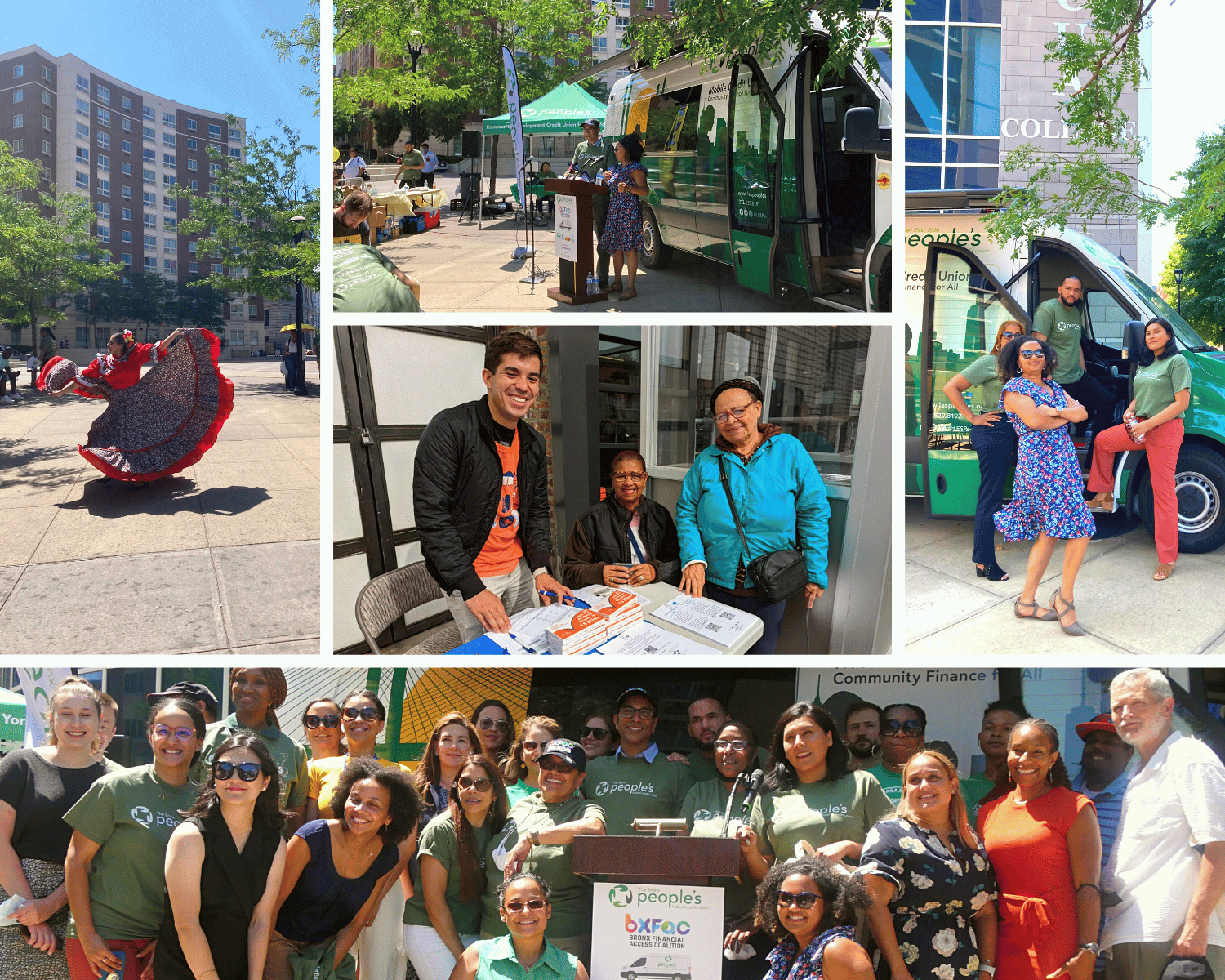
Big Financial Inclusion and Access Win for the Bronx! UNHP participates in the official launch of a brick-and-mortar Bronx People's Federal Credit Union in 2023. This announcement comes from the Bronx Financial Access Coalition (BxFAC), a partnership between UNHP, Banana Kelly Community Improvement Association, We Stay/Nos Quedamos, and Whedco, created to address banking and financial inequities in the Bronx. Due to pandemic-related branch closures in an area that already houses the fewest bank branches in the state, as well as redlining and continued disinvestment in the Bronx, the need for better financial services is great. In the vacuum created by the loss of traditional banks, the Bronx is populated by check cashers, pawn shops, and costly financial services and contains the highest number of these predatory financial services in New York state. The establishment of a Bronx People’s Federal Credit Union in association with the Lower East Side People’s Federal Credit Union, as explained in the press release from BxFAC, marks a step toward providing our Bronx community with affordable and wealth-building financial services.
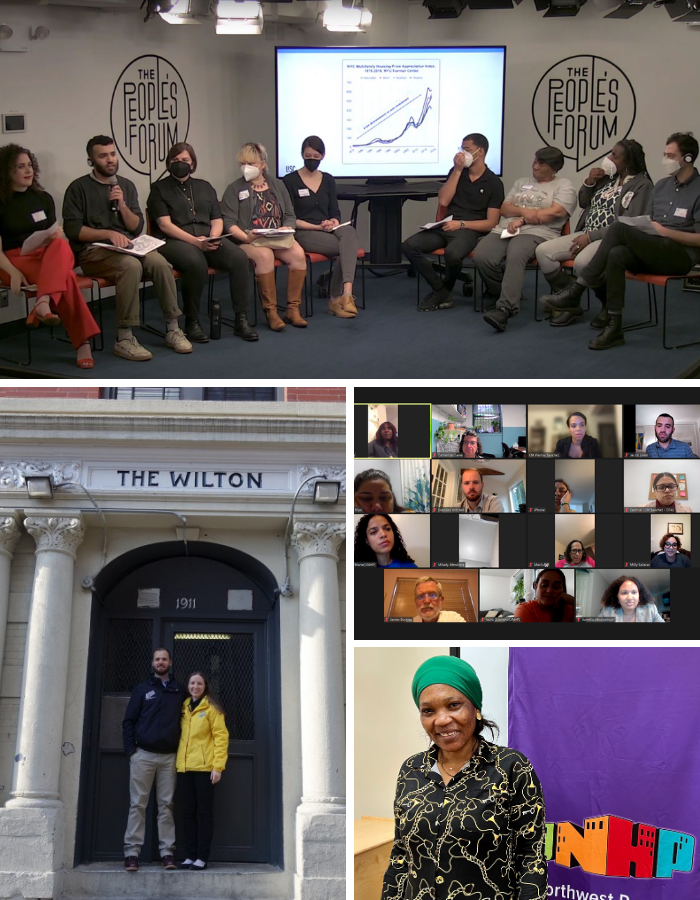 Into 2023 UNHP comes full circle by hosting the third edition book release event of South Bronx Rising: The Rise, Fall, and Resurrection of An American City at Fordham University. With UNHP director Jim Buckley as emcee, Author Jill Jonnes and activist Nilka Martell highlighted the role of community groups and Bronx residents in the transformation of the Bronx. The grassroots community organizing movements in the Bronx are the foundation of the book and feature interviews and the work of NWBCCC, UNHP and other community-based groups that helped the borough overcome widespread abandonment and public and private disinvestment. In 2023 the Decade old UNHP Building Indicator Project played a role in preserving the Bronx buildings mortgaged by Signature Bank - highlighting that even at 40 we remain relevant in the important work to keep Bronx multifamily buildings decent and affordable. UNHP is looking forward to bringing solar energy to our buildings, expanding our work to share our research and experience with tenant advocates and organizers, and working with our community in new ways to build financial empowerment and housing security and lifting Bronx voices in all the ways we work. Here's to the next 40 years - are you with us?
Into 2023 UNHP comes full circle by hosting the third edition book release event of South Bronx Rising: The Rise, Fall, and Resurrection of An American City at Fordham University. With UNHP director Jim Buckley as emcee, Author Jill Jonnes and activist Nilka Martell highlighted the role of community groups and Bronx residents in the transformation of the Bronx. The grassroots community organizing movements in the Bronx are the foundation of the book and feature interviews and the work of NWBCCC, UNHP and other community-based groups that helped the borough overcome widespread abandonment and public and private disinvestment. In 2023 the Decade old UNHP Building Indicator Project played a role in preserving the Bronx buildings mortgaged by Signature Bank - highlighting that even at 40 we remain relevant in the important work to keep Bronx multifamily buildings decent and affordable. UNHP is looking forward to bringing solar energy to our buildings, expanding our work to share our research and experience with tenant advocates and organizers, and working with our community in new ways to build financial empowerment and housing security and lifting Bronx voices in all the ways we work. Here's to the next 40 years - are you with us?
To read more about the ways that UNHP works to preserve housing and improve the living conditions of the Bronx, check out our blogs, publications, and annual reports from years past. We thank you all for your interest in and support of our work!
Shout out to Greg Jost who with Jumelia helped to create the first 30 years of this timeline for our 30th anniversary! A big debt of gratitude to all those upon whom our work and success rest - from neighborhood leaders, former and current staff, interns, community, public and private partners - together we have and can accomplish impossible things.
